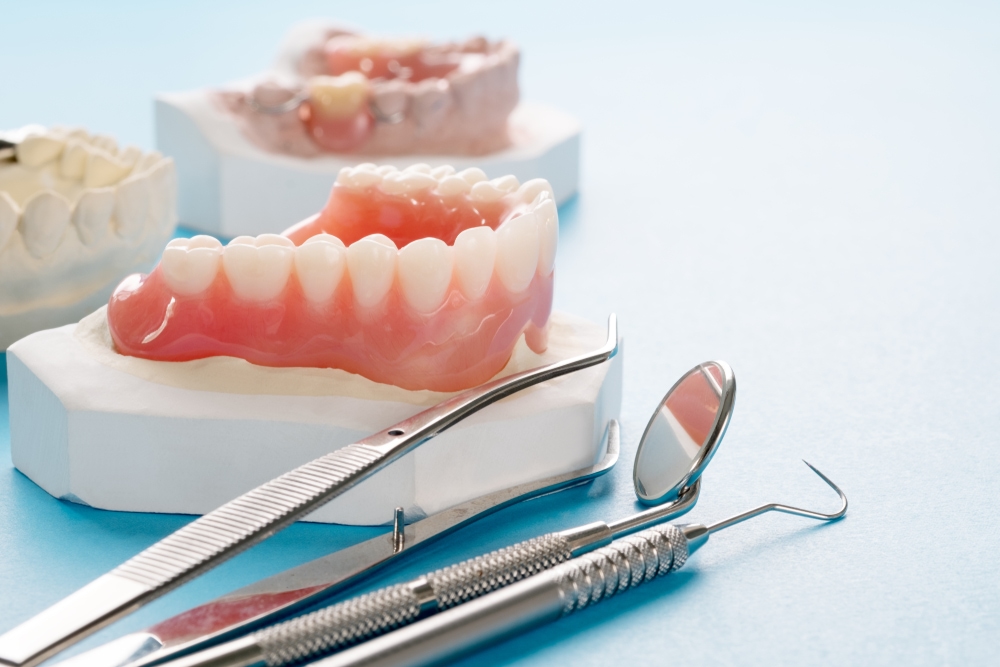Restoring Your Smile with Implants
Your use your teeth every day when sharing a beautiful smile, chewing favourite foods, or speaking with friends. When you’re missing teeth, it can impact your dental health, self-esteem, and your ability to communicate.
Restorative dentistry can repair cracks, gaps, and chips or replace missing teeth. There are a few options available when you have one or 2 missing teeth, but what about when you need a complete set? Are dentures the only choice, or can your dentist replace all your teeth with implants?
What Is a Dental Implant?
Missing teeth can impact the appearance of your smile and also affect your dental health in multiple ways, including:
- Altering bite
- Bone loss
- Chewing & swallowing problems
- Insufficient eating & nutrition
- Increasing risk for dental problems
- Weakening jaw muscle & structure
A dental implant replaces your missing natural tooth with an artificial titanium root. Then, an artificial tooth is attached to act as the crown (visible part of the tooth). An implant is a permanent anchor that preserves gum and bone structure.
Dental implants are a popular choice for replacing a missing or extracted tooth because they can feel natural and restore bite force. In many ways, a dental implant can help your artificial tooth behave like a natural tooth.
Placing an implant usually requires at least 2 visits, first for the implant surgery and second for attaching the artificial tooth. Any additional appointments can depend on procedure specifics, such as how well the patient is recovering or the type of artificial tooth. Recovery after implant surgery can take several months as the implant bonds to the bone and gum.
Dental implants can replace a single tooth or multiple teeth. For example, when a natural tooth is too weak to support a bridge, a fixed bridge is secured to 2 dental implants.
A bridge is a permanent attachment used to replace a few missing teeth. It’s known as a bridge because it has 2 sides, each fused to 2 crowns. The bridge can be attached to a healthy natural tooth or a dental implant.
While dentists usually choose dental implants to replace a few teeth, replacing a whole set with implants is possible. However, your dentist or oral surgeon will unlikely suggest replacing all 28 teeth with 28 implants. Although dental implants have a high success rate, there are risks associated with any surgery.
Instead, dental implants can be used to anchor other restorative options, including bridges and dentures.

Dentures
When most people think of false or replacement teeth, they’re likely to think of dentures. Dentures are custom-made artificial teeth. However, there are a few types of dentures, including dentures that attach to dental implants. Generally, dentures are either partial or complete.
Partial Dentures
Partial dentures or removable partial denture prostheses replace a few teeth, usually when nearby natural teeth cannot support a bridge. However, unlike a bridge, partial dentures are removable.
Partial dentures are often a short-term solution for patients who might need complete dentures later. Patients with primarily healthy teeth can also use partial dentures long-term. Still, new prosthetic teeth will likely be necessary over time.
Complete Dentures
Complete or full dentures are held in place by suction and are easily removed. Complete dentures can replace a full set of missing teeth. There are 2 types:
- Immediate dentures are fitted before extracting any remaining natural teeth. Immediately after extraction, the dentures are inserted. The fit can change over the following months, as the gums and bone tissue can shrink after the extraction. Patients have a set of dentures during recovery, but their dentures will need to be refitted later.
- Conventional dentures are fitted after tooth extraction and recovery. Healing after tooth extraction can take up to 6 months. Then the dentures are inserted after the gums and jaw tissue has healed. Patients are without dentures or teeth during the recovery period.
Overdentures
Overdentures, also called implant-supported dentures, are a set of artificial teeth that attach to dental implants. The dentures are removable, snapping into place, but the implants are permanent.
Traditional dentures remain in place because of suction, sometimes causing the dentures to slip. Overdentures are securely attached and can be cared for like natural teeth. Dental implants act as anchors allowing your artificial teeth to feel and function like natural teeth.
Getting fitted for overdentures takes longer than conventional dentures. A dental implant procedure is a multistep process lasting 3–9 months depending on individual recovery time. After the implant process is completed, the patient is fitted for dentures.
Which is Better?
Dental implants, bridges, and dentures all have advantages. However, the best option for your comfort and dental health depends on various factors. Your dentist can help you understand the benefits of each choice and provide an appropriate recommendation.
Talk to our oral care team when you have questions about any type of restorative dentistry, from crowns to implants. Book an appointment with Markham Dental Smiles today!







